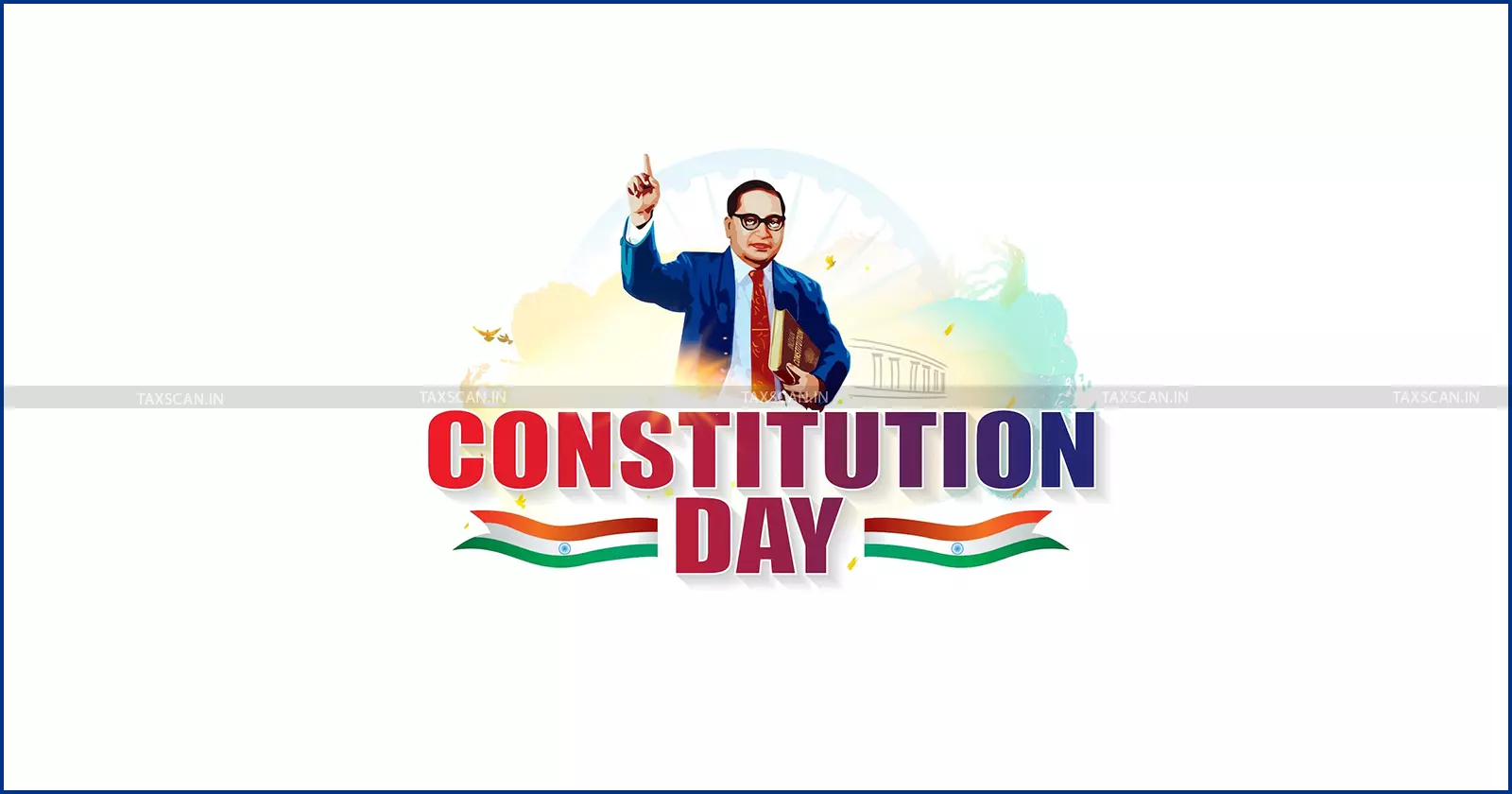Constitution Day: Reflecting on India’s Living Charter of Democracy and Rights
The article explores landmark judgments, social justice measures, and economic provisions, highlighting how the Constitution remains a living, guiding charter for the nation

Each year on 26 November, India observes Constitution Day to commemorate the adoption of the Constitution by the Constituent Assembly in 1949. More than a ceremonial anniversary, the day serves as a reminder of the transformative leap from colonial rule to democratic self-governance.
The Constitution is not merely a legal text but a national compact that defines the moral, political, and institutional foundations of the republic. As India continues to evolve socially, economically, and technologically, the relevance of the Constitution is constantly reaffirmed through judicial interpretation, democratic practice, and citizen engagement.
The Making of Constitution
The Indian Constitution is often celebrated as a visionary text, one that imagined a democratic republic in a newly independent nation grappling with deep social stratification, massive displacement, and the trauma of Partition. The Constituent Assembly, comprising lawyers, freedom fighters, scholars, and social reformers, deliberated for nearly three years. The debates reflected not only the desire to structure government but to remake society through constitutional morality, a phrase later revived by the judiciary to measure conduct in public life.
Key framers, including B.R. Ambedkar, Jawaharlal Nehru, S. Radhakrishnan, Rajendra Prasad, and Hansa Mehta, contributed differing ideological influences, but shared a commitment to parliamentary democracy, rule of law, federalism, and individual rights. The adoption of the Constitution represented a remarkable consensus in a diverse nation, and in doing so, it laid the foundation for a constitutional culture that continues to evolve.
The Preamble as a Moral Compass
Constitution Day renews public attention to the Preamble, which defines India as a Sovereign, Socialist, Secular, Democratic Republic, committed to justice, liberty, equality, and fraternity. Courts have repeatedly affirmed the Preamble’s significance,not merely as an introductory statement but as a guiding constitutional philosophy. The Kesavananda Bharati judgment in 1973 elevated parts of this philosophy into the basic structure doctrine, ensuring that core constitutional values remain beyond legislative or executive erosion.
In an era of rising polarisation and competing political narratives, the Preamble remains a touchstone for evaluating governance, public policy, and civic conduct. Constitution Day offers a moment to reflect on how faithfully these ideals are being interpreted and implemented,not only by institutions of the State but through citizen participation and public discourse.
Fundamental Rights and Expanding Liberties
One of the Constitution’s most transformative features is its charter of Fundamental Rights, protecting freedoms of speech, equality, life, and dignity. Over the decades, the judiciary has expanded these rights dramatically through interpretation. The right to privacy, recognised in the Puttaswamy judgment, the decriminalisation of consensual same-sex relationships in Navtej Johar, and the affirmation of individual autonomy in Shafin Jahan are examples of how the constitutional text remains dynamic.
At the same time, Constitution Day is a reminder that rights are contested spaces. Debates on freedom of expression, data protection, preventive detention, internet restrictions, and minority protections reveal that constitutional rights require constant vigilance. The Constitution’s framers anticipated such tensions, embedding safeguards but also believing that a mature citizenry would assert and defend its liberties when necessary.
Democracy, Elections, and the Will of the People
India’s democratic architecture, universal suffrage, independent elections, and multiparty competition were revolutionary for a newly independent state. The Constitution entrusted the people with ultimate sovereignty, exercised through periodic elections and peaceful transfers of power. Today, Constitution Day prompts renewed examination of democratic health, campaign financing, electoral transparency, criminalisation of politics, and voter disillusionment, all shape the functioning of democracy.
Institutions such as the Election Commission, though robust, face scrutiny over autonomy and accountability. The role of media, civil society, and digital platforms in shaping electoral behaviour also raises questions about the Constitution’s ability to adapt to new technological and information ecosystems. Yet, the continued mass participation in elections demonstrates enduring faith in democratic processes, even amid institutional and political challenges.
Federalism and Centre-State Equilibrium
Another cornerstone of the Constitution is federalism, designed to balance national unity with regional diversity. Over decades, Centre–State relations have oscillated in response to political coalitions, judicial interpretations, and financial reconfiguration. The rise of GST, cooperative federalism rhetoric, and disputes over gubernatorial power, legislative competence, and administrative control, especially highlighted in the tussle over governance in Delhi, have reinvigorated constitutional debate.
Constitution Day underscores the importance of strengthening federal mechanisms to ensure that decentralisation remains meaningful and that democratic participation flourishes at state and local levels. The 73rd and 74th Amendments, which empowered panchayats and municipalities, remind us that constitutional democracy is not only national, it must be lived in everyday governance.
Taxation, Trade and Commerce under the Constitutional Scheme
Economic integration was a central concern for the framers, leading to the constitutional structuring of powers relating to taxation and interstate commerce. Legislative authority over taxes is distributed across the Union List, State List, and Concurrent List, preventing jurisdictional overlap.
Articles 301 to 307 ensure freedom of trade, commerce, and intercourse throughout India. The Supreme Court clarified the limits of state taxation on the movement of goods in Atiabari Tea Co. v. State of Assam (1961), holding that taxes impeding trade violate Article 301. In Automobile Transport (Rajasthan) Ltd. v. State of Rajasthan (1962), the Court allowed compensatory taxes while preventing discriminatory barriers.
The constitutional balance evolved further in Jindal Stainless Ltd. v. State of Haryana (2016), which examined the validity of entry tax in light of economic freedoms. The introduction of the Goods and Services Tax through the 101st Constitutional Amendment represented the most significant restructuring of indirect taxation, embedding cooperative fiscal federalism through the GSTCouncil.
The Supreme Court in Mohit Minerals v. Union of India (2022) clarified that the GST Council’s recommendations are not binding, reiterating the constitutional federal balance. As India navigates issues like digital taxation, e-commerce regulation, carbon pricing, and cross-border data flows, constitutional principles continue to guide harmonisation between national economic cohesion and state autonomy.
Social Justice and the Constitution’s Transformative Ambition
Perhaps the Constitution’s most ambitious goal is achieving social justice in a society long divided by caste, gender, and economic inequality. Protective discrimination, reservations, abolition of untouchability, gender equality provisions, and social welfare commitments are not merely policy tools but constitutional mandates.
Ambedkar famously cautioned that political democracy must lead to social and economic democracy. Constitution Day is a moment to evaluate progress: caste discrimination persists, gender gaps remain, and economic disparities are widening. Yet the Constitution continues to empower marginalised voices, through public interest litigation, representation policies, grassroots activism, and judicial remedies.
The Judiciary and Constitutional Guardianship
The judiciary plays a central role in interpreting and safeguarding the Constitution. From striking down constitutional amendments that violate basic structure to adjudicating individual rights, the Supreme Court and High Courts remain pivotal actors in constitutional evolution. However, increasing caseloads, delays, transparency concerns, and debates over judicial appointments highlight the need for reform without compromising independence.
Judicial review remains a defining constitutional feature, ensuring that no branch of government is above the Constitution. Constitution Day serves as a reminder that judicial strength lies not only in legal reasoning but in public trust.
Citizenship, Duties, and Constitutional Responsibility
Much attention is given to rights, but the Constitution also articulates Fundamental Duties, urging citizens to uphold the spirit of the nation. In recent years, political discourse has emphasised duties, sometimes to justify compliance, sometimes to encourage civic responsibility. Constitution Day invites a balanced understanding: rights and duties are mutually reinforcing, not competing concepts.
Constitutional citizenship requires informed participation, tolerance, and respect for plurality. As public debate becomes increasingly polarised, Constitution Day is a call to revive civic literacy and constitutional awareness.
A Living Document for a Changing India
The Indian Constitution has been amended more than a hundred times, reflecting adaptability, political negotiation, and societal change. Digital governance, artificial intelligence, cross-border data flows, climate emergencies, and globalisation present new constitutional questions. The framers could not have imagined these contexts, yet they built a framework flexible enough to evolve.
Constitution Day reminds us that constitutional interpretation is continuous,not frozen in 1949, but responsive to contemporary realities while anchored in foundational values.
Conclusion: Renewal Through Reflection
Constitution Day is not only a historical observance but a democratic exercise in reflection. It asks institutions to examine their fidelity to constitutional principles, and it calls upon citizens to recognise their role in sustaining constitutional democracy. The Constitution lives not only in courtrooms and legislatures, but in classrooms, workplaces, public discourse, and civic behaviour.
As India navigates social change, technological transformation, and political contestation, Constitution Day reaffirms that the strength of the Republic lies in the enduring commitment to liberty, equality, justice, and fraternity. The Constitution remains a shared national inheritance and a shared responsibility.
Support our journalism by subscribing to Taxscan premium. Follow us on Telegram for quick updates


